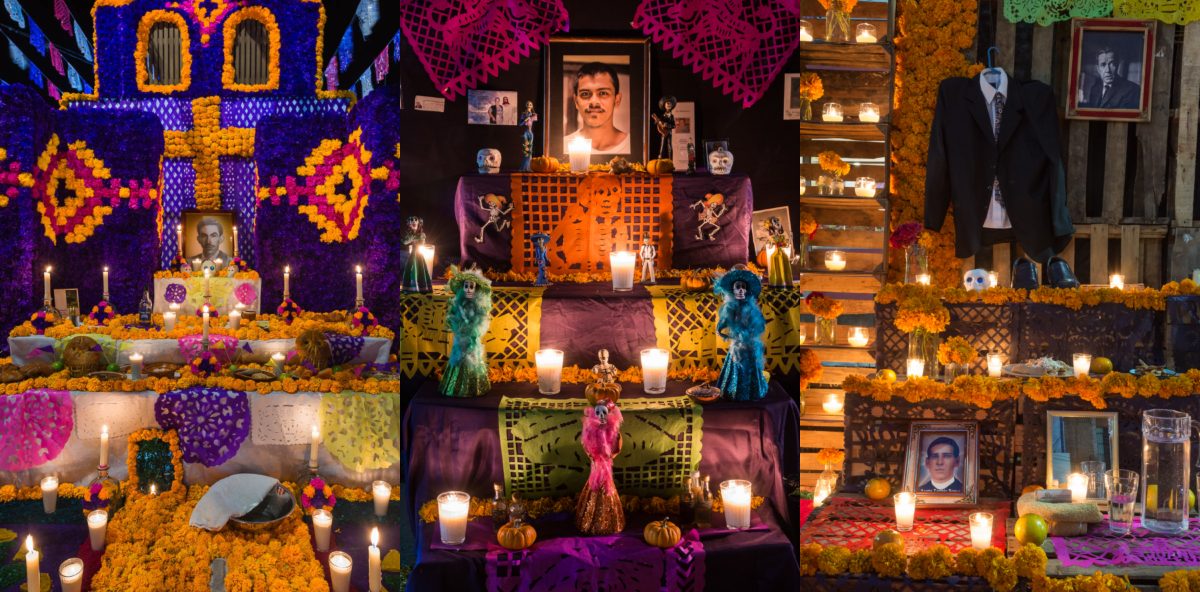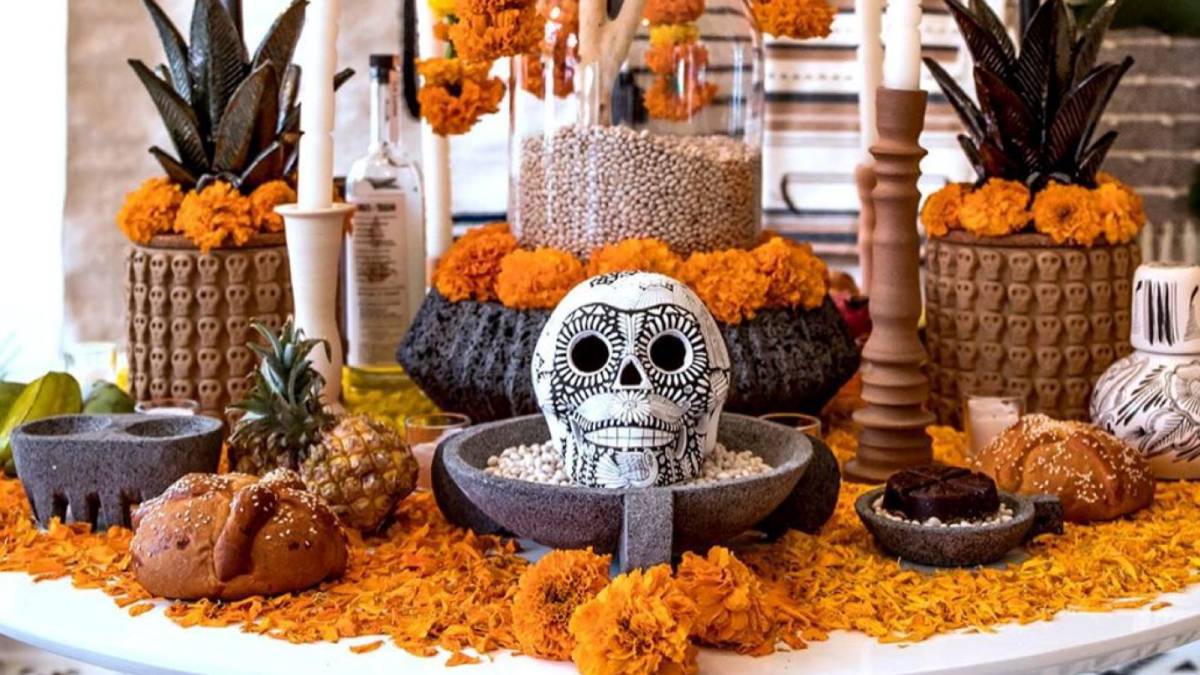

The light of the candles also called ceras -waxes- symbolizes Jesus Christ Reborn and faith.įlowers, specially Cempasuchitl, adorn the ofrenda.
#El dia de los muertos ofrenda full#
Their light is thought to guide them on their way back. In Mexico, celebrations for el Dia de los Muertos, or Day of the Dead, are already in full swing. Generally, on the top level, the images of Saints and the Crucifix are set.įor each deceased relative, a candle is set. Several levels can be set on the ofrendas. Then the papel picado, cut tissue paper, is set over the cloth. The ofrenda is set on a table, covered with a fine tablecloth, preferably white. What are the most important elements of an Ofrenda? We must remember they are going to have very important “visitors”. Rituals celebrating the deaths of ancestors had been observed by these. Before setting an altar, they thoroughly clean their house. The Day of the Dead celebrations in Mexico can be traced back to a precolumbian past. O frendas are set up to remember and honor the memory of their ancestors. Sugar skulls, or calaveras, add a lighthearted touch, for both the dead and the living. Papel picado serves as a colorful and meaningful trim: black represents death, purple means grief of mourning, pink is celebration, white symbolizes hope and yellow stands for the sun. The vast majority of Mexicans are Christian Catholics, so they only worship God. Elements of a Día de los Muertos Ofrenda. It originated and is mostly observed in Mexico but also in. Some people mistakenly think that Mexicans that set up Day of the Dead ofrendas for their defunct relatives are actually worshiping them. Dia de los Muertos or Day of the Dead is a holiday celebrated on the 1st and 2nd of November. Many families traditionally maintain a small altar in their. They are also called altares or altars, but they are not for worship. Ofrendas (literally offerings) are a central component to Day of the Dead celebrations in Mexico. The word ofrenda means offering in Spanish.
#El dia de los muertos ofrenda install#
That’s what we do.Ofrendas are an essential part of the Day of the Dead celebrations. Altar Decorations: Many buyers like to install a small ceremonial altar for their Day of the Dead or Halloween needs. And, if we want, we can scatter them on the ground nearby, or bury them also.

We bury them, and after burying them there are only flowers left on the ofrenda until the eighth day, and then we take down the arch and all the flowers, which have become dry. We bury them so they don’t go bad, get eaten by flies and mosquitos. We take away the fruit so that it doesn’t-it will start to turn, yes? So, after the festival of the children’s souls and the adults is over, we take down the fruits and bury them. The altar is up for eight days, but only with the flowers, the flowers that we put there from All Saints, we leave, but the fruit, we take away. We take down the flowers from the altar and bury them. Nothing left on the altar is eaten, not the one or two pieces of bread, nothing. The 1st of November is dedicated to children, and the 2nd to adults.

They are prepared a few days before the 1st and 2nd of November, the dates when it is believed that the dead return to visit their friends and relatives.

It’s the last night that we’ll drink hot chocolate, go and eat at each other’s houses, to visit, to have a drink, because it’s about to end.Īnd we’ll still have the arch with the flowers. The tradition of setting up ofrendas dedicated to the departed dates back to the Pre-Hispanic era. We’ll drink chocolate, for eight days, until the eighth day, which we call the octavo. And so we go from the souls of the children, then to those of the adults, and then to the celebration for us, the living. I invite my family to come, and they invite me, and we visit each other. And so we talk, we have conversations, we visit each other’s homes. But not a lot, just a little, enough to enjoy talking and being together. And then I’ll tell them, “I’ll be expecting you tomorrow.” And I’ll spend time with my friends and neighbors, drinking hot chocolate, eating, talking, making toasts to each other with mescal or a beer. I have several goddaughters from baptism, so their parents will invite me to their homes. Close friends and godparents will visit each other at home. everyone has left, the incense is extinguished. Porfiria explains more about how she and her community celebrate after November 2, and what happens to the ofrenda:


 0 kommentar(er)
0 kommentar(er)
